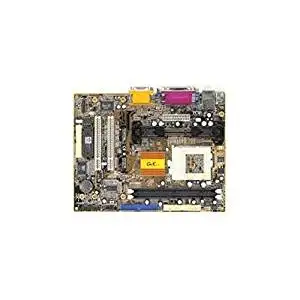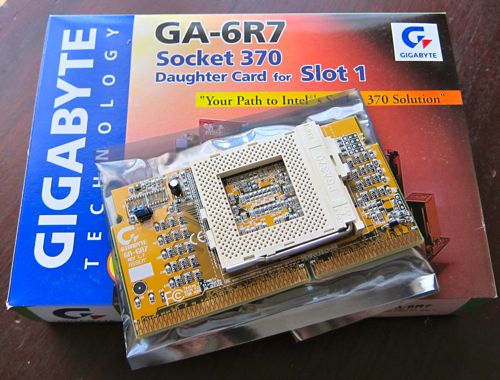Nov 14, 2006 Not all Pentium III processors were manufactured in the new package. To support large installed base of Slot 1 motherboards Intel continued to release Coppermine Pentium III processors in Slot 1 package. These processors had the same performance. Slot 1 was great for adaptability. Constructed a PC in 1999 using an Asus P2B motherboard and a Mendochino Celeron 466MHz Slot 1 version. I was able to upgrade twice: first to a Coppermine Pentium III 800MHz Socket 370 and after that to a Tualatin Celeron 1.3GHz socket 370. All it needed was a BIOS update and the appropriate slotket. May 11, 2015 #1. CPU using the Intel Celeron 400MHz of PPGA #2. Daughter-card using the Soltek SL-02A #3. Motherboard using the AOpen AX-6BC Slot 1.
| Type | PGA-ZIF |
|---|---|
| Chip form factors | Plastic pin grid array (PPGA) and Flip-chip pin grid array (FC-PGA and FC-PGA2) |
| Contacts | 370[1] |
| FSB protocol | AGTL+, AGTL |
| FSB frequency | 66, 100 and 133 MHz |
| Voltage range | 1.05–2.1 V |
| Processor dimensions | 1.95 × 1.95 inches[2](49.53 mm x 49.53 mm) |
| Processors | IntelCeleron Mendocino (PPGA, 300–533 MHz, 2.0 V) IntelCeleron Coppermine (FC-PGA, 533–1100 MHz, 1.5–1.75 V) |
| Predecessor | Slot 1 |
| Successor | Socket 423 |
| This article is part of the CPU socket series | |
Socket 370 (also known as the PGA370 socket) is a CPU socket first used by Intel for Pentium III and Celeron processors to first complement and later replace the older Slot 1 CPU interface on personal computers. The '370' refers to the number of pin holes in the socket for CPU pins.
Socket 370 was replaced by Socket 423 in 2000.
Overview[edit]
Socket 370 started as a budget oriented platform for 66 MHz FSB PPGA Mendocino Celeron CPUs in late 1998, as the move to on-die L2 cache removed the need for a PCB design as seen on Slot 1. From late 1999 to late 2000 it was Intel's main desktop socket for 100/133 MHz FSB Coppermine Pentium IIIs. In 2001, the Tualatin Pentium III processors brought changes to the infrastructure which required dedicated Tualatin-compatible motherboards; some manufacturers would indicate this with a blue (instead of white) socket. These late sockets were typically compatible with Coppermine processors, but not older Mendocino Celerons. Some motherboards that used Socket 370 support Intel processors in dual CPU configurations. Others allowed the use of a Socket 370 or Slot 1 CPU, although not at the same time. The Via-Cyrix Cyrix III, later renamed the VIA C3, also used Socket 370.
The weight of a Socket 370 CPU cooler should not exceed 180 grams (6.3 ounces). Heavier coolers may result in damage to the die when the system is not properly handled.
Socket 370 Intel processors mechanical load limits[edit]
Most Intel Socket 370 processors (Pentium III and Celeron) have the following mechanical maximum load limits which should not be exceeded during heat sink assembly, shipping conditions, or standard use. Load above those limits will crack the processor die and make it unusable.
| Location | Dynamic | Static |
|---|---|---|
| Die Surface | 890 N (200 lbf) | 222 N (50 lbf) |
| Die Edge | 667 N (100 lbf) | 53 N (12 lbf) |
Socket 370 Intel processors with integrated heat sink mechanical load limits[edit]
All Intel Socket 370 processors with integrated heat sink (Pentium III and Celeron 1.13–1.4 GHz) have the following mechanical maximum load limits which should not be exceeded during heatsink assembly, shipping conditions, or standard use. Load above those limits will crack the processor die and make it unusable.
| Location of integrated heat sink | Dynamic | Static |
|---|---|---|
| surface | 890 N (200 lbf) | 667 N (100 lbf) |
| edge | 556 N (125 lbf) | N/A |
| corner | 334 N (75 lbf) | N/A |
Slot 1 To Socket 370 Adapter
See also[edit]
References[edit]

Kingston Slot 1 To Socket 370

- ^'CPU Sockets Chart'. users.erols.com. Retrieved 2009-04-16.
- ^'Intel Pentium III Specifications'(PDF).